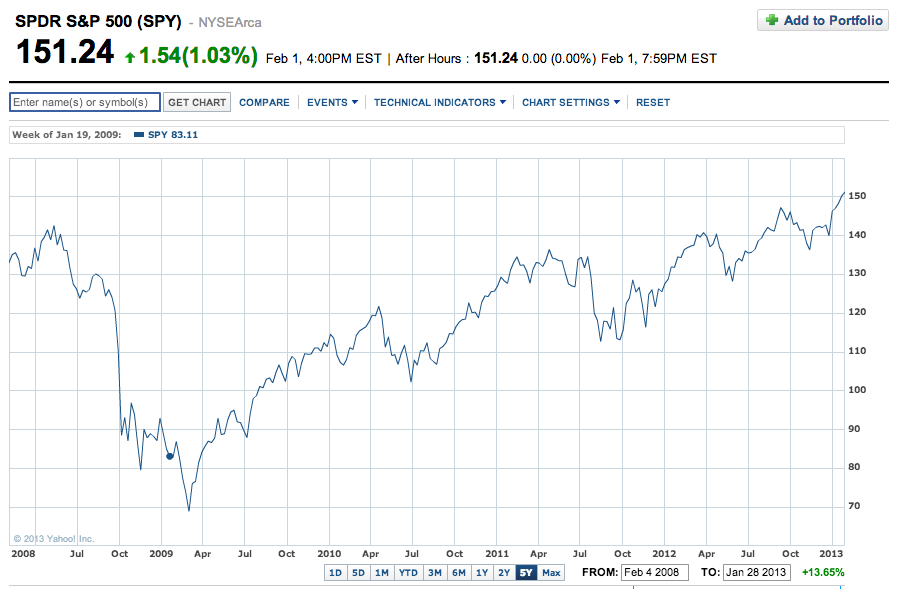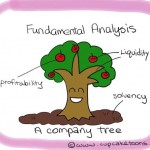The financial “Upstart” is shaking up the investment world
Almost all of the “2012 retrospectives” about the financial world have referenced the continued rapid growth and evolution of Exchange Traded Funds (ETFs) as one of the year’s top stories. For any who aren’t quite sure what an “ETF” is, it is an investment vehicle that was born in January of 1993 — when State Street Global Advisors introduced a then strange concept called the “S&P 500 SPDR” (SPY). During the ensuing years, this novel concept started gaining traction among investors because it boasted a much lower annual expense (20 basis points, versus 100 basis points or more) than mutual funds and could be bought or sold at any point during the trading day (instead of just at the end of the day, as for mutual funds). With such features, it is not surprising that the ETF market continued to grow, slowly but steadily. As the ETF asset base and management was able to spread overhead costs across more shareholders, economic principles too hold and State Street was able to lower the annual fee as assets soared (down to .17% by 1999 and to .11% by 2004).
Here is an image of a five year chart for the very first ETF instrument, SPDR S&P 500 (SPY). It is by far the largest ETF in terms of total assets (over $125 billion… over 43% more than the second largest ETF (GLD)) and most liquid ETF (over 137 million shares per day, over 64% higher than the second most liquid ETF (XLF) on the market! (Image from YahooFinance.com).

Through the first eighteen years of ETF development, it was largely an investment vehicle based upon one of a growing number of market indices (ie. a “passive” fund). By the beginning of 2012, a portfolio manager or an investor could find at least one ETF based on virtually any asset class they might desire. Therefore, by last year, combining an unparalleled variety of asset classes and investment strategies becoming available for trading throughout each day, with the ETF annual cost advantage and steadily growing ETF market liquidity – ETF’s have provided formidable competition to the seemingly “stodgy” mutual fund space. During the course of 2012, a growing recognition of these ETF “pluses” resulted in a record level of fund “inflows” by the end of the year. To be specific, U.S. ETF assets took in almost $183 billion in positive net cash flow, resulting in an incredible 28% increase in assets!
At this point, I can hear an advocate of the mutual fund business remind me: “What you say is true, but you forget that the mutual fund industry still dwarfs the ETF market. Consider these facts:
1) U.S. mutual fund assets total $11.6 trillion, and worldwide fund assets are a huge $23.8 trillion;
2) In contrast, the total of U.S. ETF assets is just below $1.4 trillion, only 1/12th the size of mutual funds!”
http://www.icifactbook.org/fb_ch2.html#assets
In truth, the ETF industry is still young (still less than 20 years old in 2012) compared with the much older and more established fund industry (Wellington Fund, the first mutual fund, was created 84 years ago). However, experts widely agree that the ETF industry’s remarkable growth will inevitably accelerate – much of that growth coming at the expense of total fund assets.
For example, on January 29th, global ratings agency, Fitch, issued a report regarding the so-called “ETF fee war”. http://www.fitchratings.com/gws/en/fitchwire/fitchwirearticle/Index-Fund,-ETF?pr_id=781249 The simplified “bottom line” of their findings is that a growing availability of increasingly cheaper and more cost efficient investment options is a great boon for investors, but a significant challenge for mutual fund providers, as well as any financial institution offering trust services or investment management. Consider this “thumbnail” sketch of comparative fees:
1) According to Global Trends Investments president, Tom Lydon, among traditional mutual funds, the annual management fee averages 1.5%; add to that the “front loaded” fee charged for commission-based funds, or the 12b-1 annual fee charged by many no-load fees (.25% or higher). Those costs add up, year after year.
2) In contrast, the average annual cost of the average ETF (after purchase) is about .45%, with many of the most popular funds charging less than .20%.
It is clear that many investors are recognizing this “cost advantage” and making adjustments in their investment choices. Since Fitch bears responsibility for rating the financial strength of many financial institutions, they are supremely qualified to weigh in on the economic impact of these developments on the industry. Fitch notes that some U.S. banks are already adjusting pricing strategies in ways likely to erode their profitability: “Price competition among providers of mutual funds and ETFs is likely to put pressure on investment management fee growth for U.S. trust and custodial banks.” A case in point demonstrating the impact of this industry transition is the earnings report issued last week by esteemed and long established money manager, T. Rowe Price. One expert dissected the various data points regarding their total assets under management during the fourth quarter and opined that, although total assets grew, it was almost entirely through asset appreciation and income. That may well explain why that firm, as well as Fidelity and other traditional mutual fund managers, have already filed with the SEC for the 2013 introduction of one or more ETF offerings!
What emboldened these firms to make this jump? Forty-one year old Pacific Investment Management Company, LLC, took that very leap last year… and a huge leap at that. Bill Gross has managed what is now the world’s largest mutual fund, Pimco Total Return Fund, since its birth. You’d think Gross has his hands full already with the responsibility to invest $285 billion profitably. In addition, you’d think that one of Gross’ key management advantages — trading daily apart from the glare of the press and anyone peeking over his shoulder to try to steal his trading ideas – would be very hard to give up. You see, managing a fund allows him to invest (largely) on a confidential basis, since he only needs to report to shareholders once a quarter. Why would he want to move into an ETF design, within which transparency and daily disclosure is essential? There is one reason – and one reason only: Gross sees the ETF option as an opportunity his business cannot afford to pass up.
What has the result been? An unbelievable success! Pimco Total Return ETF (BOND) was not introduced until March of 2012, and yet it has gathered in over $4 billion in assets! Gross’ willingness to take the risk of adapting his top notch fund success to the ETF model is undoubtedly a part of the “ETF Story” that will be chronicled and referred to for decades to come. The transition has also energized Gross. Commenting on his daily review of the performance of actively managed “BOND” versus the major indexed bond funds (every 10 minutes in fact), Gross said:
“I’m obsessive. I’m in it and I still enjoy it.”
http://finance.yahoo.com/news/pimco-total-return-etf-bill-155229556.html
The inescapable conclusion from all of these developments is that, although the ETF model bears a resemblance to the “not quite predictable” developmental changes of a teenager moving through growth spurts, it has definitely captured the attention of cost conscious investors and the financial world, including the steadily aging “adult” within investment fund management – mutual funds. As huge fund providers like Fidelity and T. Rowe Price enter the ETF world, that “teenager” (becoming twenty years old before February of 2013) will be fun to watch — growing in leaps and starts, with many surprises sure to come along the way.
Submitted By Thomas Petty
Related Posts
Also on Market Tamer…
Follow Us on Facebook

 2 Artificial Intelligence (AI) Chip Stocks to Watch That Aren't Nvidia
2 Artificial Intelligence (AI) Chip Stocks to Watch That Aren't Nvidia